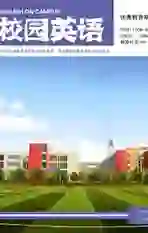Representing Deng Xiaoping: a Social—Semiotic Analysis of One Statue in Shenzhen
2016-09-07王倩
【Abstract】This paper presents an analysis of a statue of Deng Xiaoping completed in 2000. The analysis in this paper mainly uses OTooles frame work for analyzing sculpture in order to enhance our understanding of the social semiotic nature of public memorials.
【Key words】Deng Xiaoping; social semiotic; statue
1. Introduction
In this paper, the analysis of this statue uses OTooles frame work in The Language Displayed Art (1994, 2011) for analyzing sculpture, and probes into how the statue represents Deng Xiaoping by first analyzing its features, and then interpreting these features against the social- political context of the 20 anniversary of the establishment of Shenzhen Special Economic Zone.
2. Literature Review
A statue, or sculpture, is an expression of meaning, it is a semiotic artifact. Sculptures, as semiotic artifacts, represent the world and enact social relations. This analysis from a social semiotic perspective analyzes the Deng statue in terms of how the constituents construe meaning within a specific context of situation. The theory underlying this approach is Systemic Functional Linguistic (SFL).
3. Methodology
This paper makes use of OTooles frame work in The Language Displayed Art (1994, 2011) for analyzing sculpture, and probes into how the statue represents Deng Xiaoping.
4. Results and Discussion
4.1 Representational Features
In this case, a stepping forward position suggests he is energetic and looking at future. His stepping forward means insisting the policy of reformation and opening and be bold in exploration and practice.
4.2 Modal Features
Scale: A larger than life scale not only gives physical strength but also a heroic essence to the subject.
Equilibrium: The statue is vertically constructed and thrusts out of the ground with a height of 9.68meters. The plinth, which is 3.68 meters above the ground, and the flower bed surrounding the statue form a barrier to prevent the visitors from touching the statue. People cannot touch this statue, which suggests the visitors are meant to contemplate it rather than physically engage with it.
Address:Deng is looking at HongKong. Deng is characterized as energetic, spirited due to his posture stepping forward and looking at HongKong.
Modality:Deng is represented in a very life-like manner in this statue. Features including his hands, wind coat, hair line, facial expression, his walking posture, and part of wind coat floating are clearly shown. These features add to the authenticity of the statue.
Expressiveness: he is facing south and looking at Hongkong. He is energetic and looking forward full of hope and determination.
Message: The general message conveyed by this statue suggests Deng is a great leader and he is worthy of respect and admiration.
4.3 Compositional Features
Proportion in relation to setting: this statue is located on the Lotus Hill Park mountaintop square. Although the statue is fixed in this open square, it is surrounded by lots of ficus microcarpas and cypresses.
Materials: this statue uses bronze for the body of Deng and granite for the plinth. Granite has likely been chosen for the plinth because of its strength and durability (Stille et al.2008).
Cohesion: The materials and texture used in this statue cans show durability; the square and Shenzhen also establish the cohesion—these are memorial places of Deng.
4.4 The Age at Which Deng is represented
This statue was made according to one of Dengs pictures that was took in 1963 Deng visited Moscow. Deng is strong, healthy and energetic; in 1980s his thoughts are mature. The core concept of making statue is ‘walking. Walking means practice, in developing economy, China should be bold in walking forward.
5. Conclusion
This paper uses OTooles frame work to analyze Dengs statue. From analyzing the features of Dengs statue, the analysis and interpretation can enhance our understanding of the social semiotic nature of public memorials. This statue witnesses the development of Shenzhen, and hopes Shenzhen become better and better. In all, this statue is meaningful and valuable for research and protecting the history of reform and opening-up.
References:
[1]OToole,M.(1994)The Language of Displayed Art.Madison,NJ:Fairleigh Dickinson University Press.
[2]OToole,M.(2001)The Language of Displayed Art.2nd edn.London:Routledge.
[3]Stille,D.,Fichter,L.and Young.T.(2008)Igneous Rocks from Fire to Stone.Minneapolis,MN:Capstone Press.
作者简介:王倩(1992.03-),女,陕西商洛人,长安大学外国语学院在读研究生。
